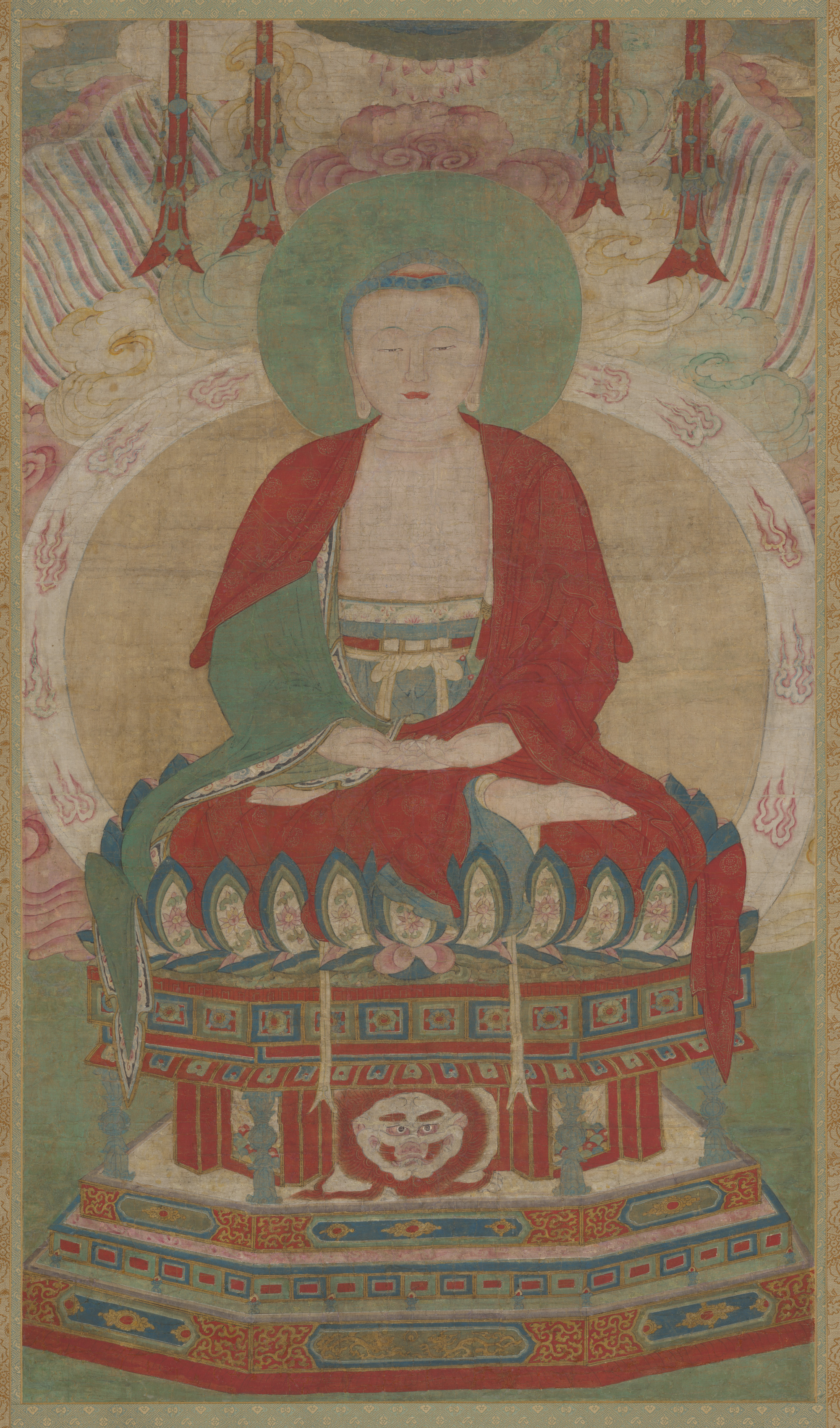The Cleveland Museum of Art
Collection Online as of April 15, 2024

Seated Amitābha
late 1500s–early 1600s
(1368-1644)
Overall with knobs: 236.9 x 105.7 cm (93 1/4 x 41 5/8 in.); Painting only: 130.8 x 75 cm (51 1/2 x 29 1/2 in.)
Location: not on view
Did You Know?
Originally, this scroll was acquired by the museum as a Korean work, but has now been tentatively reattributed as Ming period Chinese.Description
This magnificent Buddha, called Amitābha (literally, “infinite light”) is seated on a lotus pedestal with both palms facing up over crossed legs, suggesting that it is in deep meditation. In contrast to the richly ornamented throne on which the Buddha is seated, the figure itself is devoid of any jewelry or decorative attributes, emphasizing its enlightened status and detachment from worldly affairs. The lion head in the center of the pedestal is a motif from Central Asia, which can also be seen in the halo or nimbus of Chinese Buddhist stone steles.- ?–1994(R-L Sneider Inc., New York, NY, sold to the Cleveland Museum of Art)1994–The Cleveland Museum of Art, Cleveland, OH
- Waterhouse, Helen. Buddhism: Study Guide. Milton Keynes: Open University, 2005. Reproduced: pl. 9 archive.org
- Korean Gallery 236 Rotation. The Cleveland Museum of Art (organizer) (July 16, 2018-January 20, 2019).Object in Focus: Seated Amit'a. The Cleveland Museum of Art, Cleveland, OH (organizer) (July 28-September 27, 1998).
- {{cite web|title=Seated Amitābha|url=false|author=|year=late 1500s–early 1600s|access-date=15 April 2024|publisher=Cleveland Museum of Art}}
Source URL:
https://www.clevelandart.org/art/1994.94